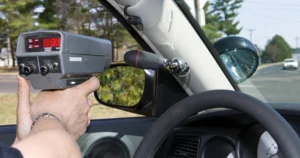 The bones, ligaments and tendons in your wrists can suffer severe trauma during a car accident. This can cause a variety of serious injuries that create chronic health problems that make everyday tasks like dressing, grooming and driving difficult or impossible.
The bones, ligaments and tendons in your wrists can suffer severe trauma during a car accident. This can cause a variety of serious injuries that create chronic health problems that make everyday tasks like dressing, grooming and driving difficult or impossible.
Our South Bend car accident attorneys advise you to seek immediate medical treatment after an accident if you are experiencing any signs or symptoms of a wrist injury, such as:
- Pain
- Swelling
- Bruising
- Discoloration
- Numbness
- Inability to flex your wrist
- Inability to straighten your wrist
- Inability to grasp objects
These could be signs of many different types of wrist injuries from a car accident, including:
Fractures
A fracture occurs when a bone within the wrist breaks. There are eight bones in the wrist that can become fractured if your wrist hits the steering wheel, dashboard or other objects within your car at high speed.
There are two types of wrist fractures:
- Non-displaced fractures – This is a fracture where the bones are stable and they have not been moved out of their correct and natural location.
- Displaced fractures – These are fractures where the bones were moved out of position and must be put back into their proper position to heal properly. Victims typically need to put their wrist in a cast or sling for these types of fractures to heal.
Sprains
Ligaments connect the bones of the wrists to one another. When these sustain damage, it is known as a sprain.
There are three categories of wrist sprains:
- A grade one sprain is the least severe type of sprain and is typically mild. At grade one, ligaments have only been stretched but are otherwise undamaged.
- A grade two sprain occurs when a ligament sustains a partial tear. Ligament tears can cause you to lose some level of function in your wrist or hand.
- A grade three sprain is the most severe sprain, when the ligament is torn entirely through. Grade three sprains require surgery to correct. Avulsion fractures can also result from grade three sprains, which is when a torn ligament breaks a section of bone.
Dislocations
When the wrist is dislocated, its bones will not move properly. Wrist dislocation is quite painful and requires immediate medical attention to correct. If a wrist dislocation is not treated right away, you may sustain permanent damage.
Tendon Damage
Several tendons in the wrist connect the surrounding muscles to the wrist bones. When tendons sustain blunt trauma, they often become inflamed. This results in tendonitis, which can cause severe pain in the wrist.
Complications of Car Accident Wrist Injuries
A wrist injury may limit or restrict your ability to do your job. This is common in victims whose jobs require them to use computers or perform manual labor.
Healing from a wrist injury takes time, as multiple bones, tendons and ligaments could have been damaged. Treatment may involve multiple surgeries. Physical therapy and rehabilitation may also be required to help you regain use of your wrist and hand.
In some cases, a wrist injury sustained in a car accident can cause lifelong pain and severe mobility limitations.
Contact an Indiana Car Accident Injury Attorney Now
Our trusted personal injury lawyers in South Bend help personal injury victims recover the compensation they deserve for medical bills, lost wages, and pain and suffering.
We offer a free, no-obligation consultation so you can learn about your options. We also work on a contingency fee basis, so there are no fees for our services unless we obtain compensation for your injuries.
Contact us today to schedule a consultation with our legal team.












